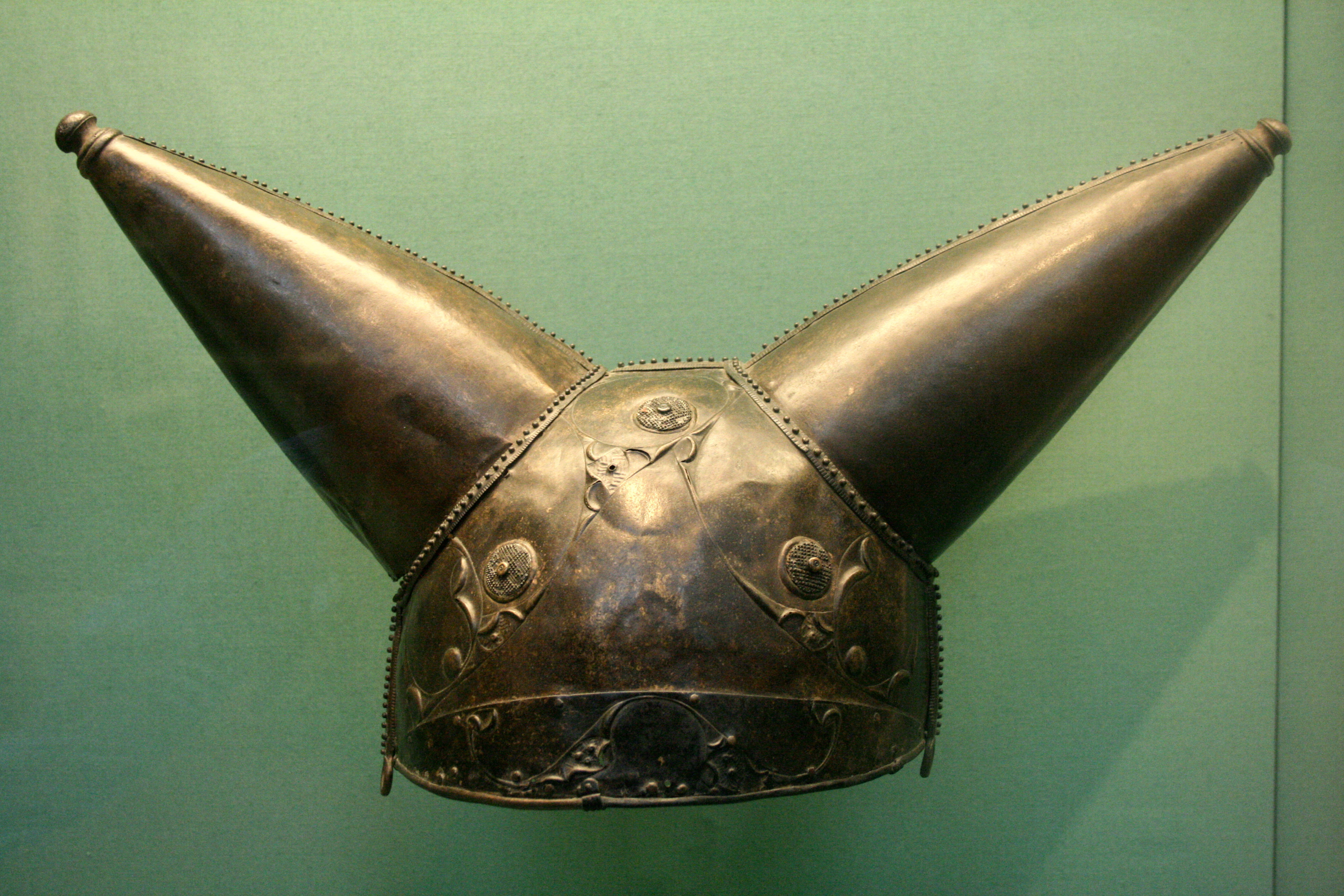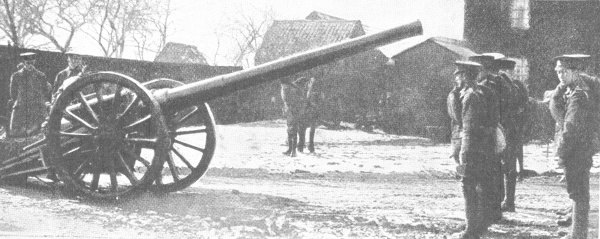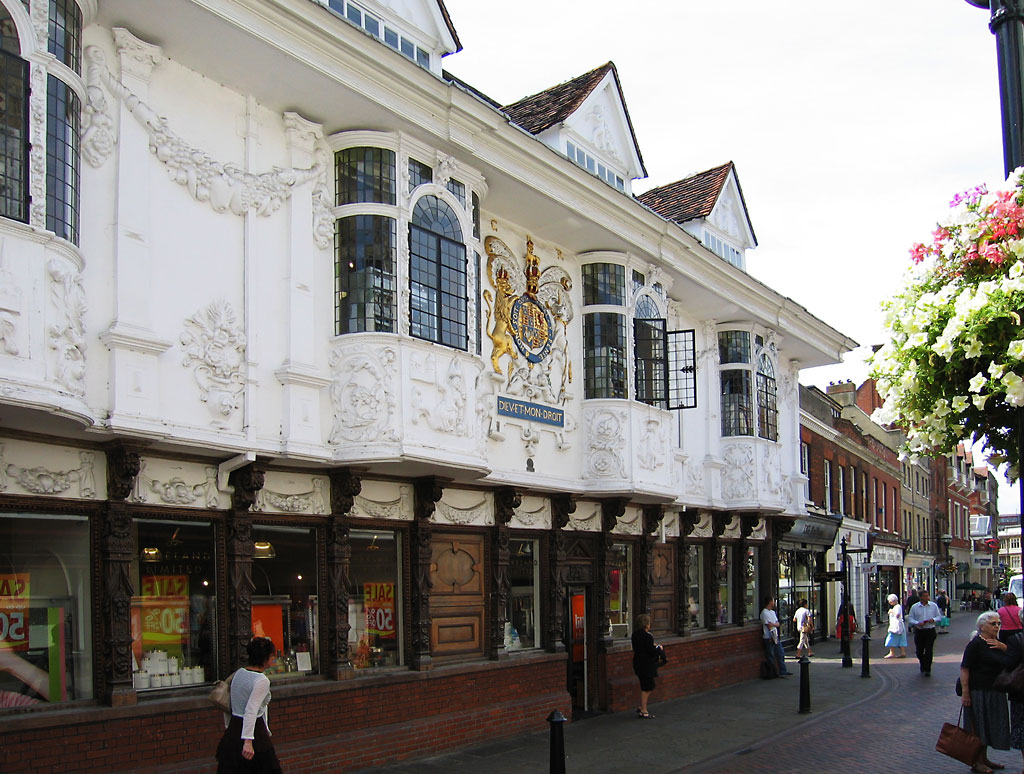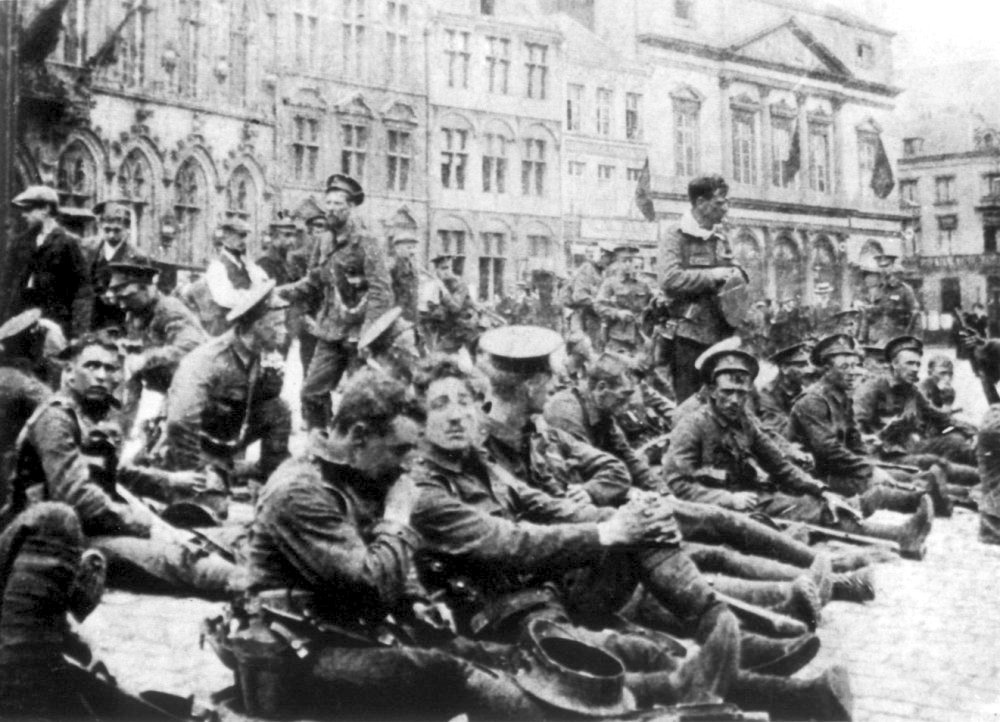|
London Heavy Brigade, Royal Garrison Artillery
The London Heavy Brigade, Royal Garrison Artillery was a unit of the British Territorial Force formed in 1908. It fought on the Western Front (World War I), Western Front during World War I, and its successors served in the Mediterranean and Middle East theatre of World War II, Mediterranean and Western Front (World War II), North-West Europe theatres during World War II. Origin When the Territorial Force was created in 1908 by the Haldane Reforms, each infantry division was allocated a heavy battery of the Royal Garrison Artillery (RGA). London provided two divisions, whose heavy batteries were manned by converting the existing 1st London Engineer Volunteer Corps (EVC) into the 1st London Heavy Brigade, RGA. The 1st London EVC had been raised in 1862 as the 1st City of London Engineer Volunteer Corps, nicknamed 'Old Jewry' from the quarter of the City of London where it was initially based, though the unit moved to the Barbican Estate, Barbican in 1868 and then to Islington in No ... [...More Info...] [...Related Items...] OR: [Wikipedia] [Google] [Baidu] |
Flag Of The British Army
A flag is a piece of textile, fabric (most often rectangular) with distinctive colours and design. It is used as a symbol, a signalling device, or for decoration. The term ''flag'' is also used to refer to the graphic design employed, and flags have evolved into a general tool for rudimentary signalling and identification, especially in environments where communication is challenging (such as the Maritime flag, maritime environment, where Flag semaphore, semaphore is used). Many flags fall into groups of similar designs called flag families. The study of flags is known as "vexillology" from the Latin , meaning "flag" or "banner". National flags are patriotic symbols with widely varied interpretations that often include strong military associations because of their original and ongoing use for that purpose. Flags are also used in messaging, advertising, or for decorative purposes. Some military units are called "flags" after their use of flags. A ''flag'' (Arabic: ) is equival ... [...More Info...] [...Related Items...] OR: [Wikipedia] [Google] [Baidu] |
City Of London
The City of London, also known as ''the City'', is a Ceremonial counties of England, ceremonial county and Districts of England, local government district with City status in the United Kingdom, city status in England. It is the Old town, historic centre of London, though it forms only a small part of the larger Greater London metropolis. The City of London had a population of 8,583 at the 2021 United Kingdom census, 2021 census, however over 500,000 people were employed in the area as of 2019. It has an area of , the source of the nickname ''the Square Mile''. The City is a unique local authority area governed by the City of London Corporation, which is led by the Lord Mayor of London, Lord Mayor of the City of London. Together with Canary Wharf and the West End of London, West End, the City of London forms the primary central business district of London, which is one of the leading financial centres of the world. The Bank of England and the London Stock Exchange are both ba ... [...More Info...] [...Related Items...] OR: [Wikipedia] [Google] [Baidu] |
Kitchener's Army
The New Army, often referred to as Kitchener's Army or, disparagingly, as Kitchener's Mob, was an (initially) all-volunteer portion of the British Army formed in the United Kingdom from 1914 onwards following the outbreak of hostilities in the First World War in late July 1914. It originated on the recommendation of Herbert Kitchener, then the Secretary of State for War to obtain 500,000 volunteers for the Army. Kitchener's original intention was that these men would be formed into units that would be ready to be put into action in mid-1916, but circumstances dictated the use of these troops before then. The first use in a major action of Kitchener's Army units came at the Battle of Loos (September–October 1915). Origins Contrary to the popular belief that the war would be over by Christmas 1914, Kitchener predicted a long and brutal war. He believed that arrival in Europe of an overwhelming force of new, well-trained and well-led divisions would prove a decisive blow aga ... [...More Info...] [...Related Items...] OR: [Wikipedia] [Google] [Baidu] |
193rd Heavy Battery, Royal Garrison Artillery
The 8th Lancashire Artillery Volunteers was a unit of the British Volunteer Force raised in Liverpool, Lancashire, in 1860. Later it transferred to the Territorial Force as a brigade of heavy artillery, and its batteries fought in many of the great battles on the Western Front during the First World War. Volunteer Force The enthusiasm for the Volunteer movement following an invasion scare in 1859 saw the creation of many Rifle and Artillery Volunteer Corps composed of part-time soldiers eager to supplement the Regular British Army in time of need. One such unit was the 8th Lancashire Artillery Volunteer Corps (AVC) formed in Liverpool on 9 January 1860.Frederick, p. 664.Litchfield & Westlake, pp. 107–13. In March the ''Army List'' showed it as having been absorbed by the 1st Lancashire AVC (also in Liverpool) but it retained its independence and by June had become part of the 1st Administrative Brigade of Lancashire Artillery Volunteers. On 19 October 1860 it became a fully ind ... [...More Info...] [...Related Items...] OR: [Wikipedia] [Google] [Baidu] |
Le Havre
Le Havre is a major port city in the Seine-Maritime department in the Normandy (administrative region), Normandy region of northern France. It is situated on the right bank of the estuary of the Seine, river Seine on the English Channel, Channel southwest of the Pays de Caux, very close to the Prime Meridian (Greenwich), Prime Meridian. Le Havre is the most populous commune of Upper Normandy, although the total population of the greater Le Havre conurbation is smaller than that of Rouen. It is also the second largest subprefecture in France, after only Reims. The name ''Le Havre'' means "the harbour" or "the port". Its inhabitants are known as ''Havrais'' or ''Havraises''. The city and Port of Le Havre, port were founded by Francis I of France, King Francis I in 1517. Economic development in the early modern period was hampered by European wars of religion, religious wars, conflicts with the English, epidemics, and storms. It was from the end of the 18th century that Le Havre st ... [...More Info...] [...Related Items...] OR: [Wikipedia] [Google] [Baidu] |
Woolwich
Woolwich () is a town in South London, southeast London, England, within the Royal Borough of Greenwich. The district's location on the River Thames led to its status as an important naval, military and industrial area; a role that was maintained throughout the 16th to 20th centuries. After several decades of economic hardship and social deprivation, the area now has several large-scale urban renewal projects. Geography Woolwich is situated from Charing Cross. It has a long frontage to the south bank of the River Thames. From the riverside it rises up quickly along the northern slopes of Shooter's Hill towards the common, at and the ancient London–Dover Road, at . The Woolwich (parish), ancient parish of Woolwich, more or less the present-day Wards and electoral divisions of the United Kingdom, wards Woolwich Riverside and Woolwich Common, comprises . This included North Woolwich, which is now part of the London Borough of Newham. The ancient parishes of Plumstead and E ... [...More Info...] [...Related Items...] OR: [Wikipedia] [Google] [Baidu] |
Ipswich
Ipswich () is a port town and Borough status in the United Kingdom, borough in Suffolk, England. It is the county town, and largest in Suffolk, followed by Lowestoft and Bury St Edmunds, and the third-largest population centre in East Anglia, after Peterborough and Norwich. It is northeast of London and in 2011 had a population of 144,957. The Ipswich built-up area is the fourth-largest in the East of England and the 42nd-largest in England and Wales. It includes the towns and villages of Kesgrave, Woodbridge, Suffolk, Woodbridge, Bramford and Martlesham Heath. Ipswich was first recorded during the medieval period as ''Gippeswic'', the town has also been recorded as ''Gyppewicus'' and ''Yppswyche''. It has been continuously inhabited since the Anglo-Saxon settlement of Britain, Saxon period, and is believed to be one of the Oldest town in Britain, oldest towns in the United Kingdom.Hills, Catherine"England's Oldest Town" Retrieved 2 August 2015. The settlement was of great eco ... [...More Info...] [...Related Items...] OR: [Wikipedia] [Google] [Baidu] |
58th (2/1st London) Division
The 58th (2/1st London) Division was an infantry division created in 1915 as part of the massive expansion of the British Army during the First World War. It was a 2nd Line Territorial Force formation raised as a duplicate of the 56th (1/1st London) Division. After training in Britain, the division joined the British Expeditionary Force (BEF) on the Western Front in 1917. It saw action at the battles of Arras and Passchedaele in 1917 and the German spring offensive in 1918. It then took part in the Battle of Amiens and the final Allied Hundred Days Offensive of the war. The division was recreated during the Second World War, as an imaginary deception formation. Origin The formation of reserve or 2nd Line TF units was authorised by the War Office on 31 August 1914. At first they comprised those members of the pre-war parent unit who had not volunteered for or were unfit for overseas service, who trained the flood of volunteers who came forward. Later, the 2nd Line formations ... [...More Info...] [...Related Items...] OR: [Wikipedia] [Google] [Baidu] |
British Expeditionary Force (World War I)
The British Expeditionary Force (BEF) was the formation of British army on the Western Front during World War I. They were sent by Britain to France in 1914 to aid in resisting the German invasion. Originally sent as six divisions the British Army to the Western Front during the First World War. Planning for a British Expeditionary Force began with the 1906–1912 Haldane Reforms of the British Army carried out by the Secretary of State for War Richard Haldane following the Second Boer War (1899–1902). The term ''British Expeditionary Force'' is often used to refer only to the forces present in France prior to the end of the First Battle of Ypres on 22 November 1914. By the end of 1914—after the battles of Mons, Le Cateau, the Aisne and Ypres—the existent BEF had been almost exhausted, although it helped stop the German advance.An alternative endpoint of the BEF was 26 December 1914, when it was divided into the First and Second Armies (a Third, Fourth and ... [...More Info...] [...Related Items...] OR: [Wikipedia] [Google] [Baidu] |
QF 4
QF may stand for: Businesses and organisations * Qantas, an Australian airline (IATA:QF) * Qatar Foundation The Qatar Foundation for Education, Science and Community Development () is a state-led non-profit organization in Qatar, founded in 1995 by then-List of emirs of Qatar, emir Hamad bin Khalifa Al Thani and his second wife Moza bint Nasser Al-Miss ..., a non-profit * Quiverfull, a Christian movement Military * Quds Force, an Iranian expeditionary unit * Quick-firing gun, an artillery piece * A gun breech that uses metallic cartridges; see British ordnance terms#QF * Q-Fire, a decoy fire site used in World War II Other uses * Quality factor, in physics and engineering, a measure of the "quality" of a resonant system {{disambig fr:QF ... [...More Info...] [...Related Items...] OR: [Wikipedia] [Google] [Baidu] |
Salisbury Plain
Salisbury Plain is a chalk plateau in southern England covering . It is part of a system of chalk downlands throughout eastern and southern England formed by the rocks of the Chalk Group and largely lies within the county of Wiltshire, but stretches into Hampshire. The plain is famous for its rich archaeology, including Stonehenge, one of England's best known landmarks. Large areas are given over to military training; thus, the sparsely populated plain is the biggest remaining area of calcareous grassland in northwest Europe. Additionally, the plain has arable land, and a few small areas of beech trees and coniferous woodland. Its highest point is Easton Hill. A large amount of land is set aside for military use as Salisbury Plain Training Area. Physical geography The boundaries of Salisbury Plain have never been truly defined, and there is some difference of opinion as to its exact area. The river valleys surrounding it, and other downland, downs and plains beyond them loo ... [...More Info...] [...Related Items...] OR: [Wikipedia] [Google] [Baidu] |







